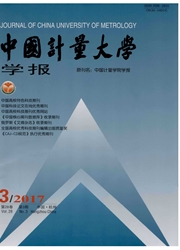

 中文摘要:
中文摘要:
针对固体结构内部温度测量的工程需求,比较了目前工业中应用较多的热电偶测温法、光纤光栅测温法、中子共振谱法和超声测温技术,发现超声测温技术具有非接触式测量、测温范围广、响应速度快等特点而更适用于固体结构内部温度的测量.调研了超声测温技术的发展历史与国内外现状,重点对超声温度场重建方法进行了介绍与分析,发现现有的重建方法主要是针对一维温度场的而且都存在参数获取困难的局限性,导致重建方法的适用性较差并且重建精度较低.综述了超声测温技术在火灾损伤、医疗卫生、核力发电、冶炼制造等领域中的应用,讨论了超声测温技术在测温机理、声时测量算法和时间测量分辨率等方面存在的技术问题,总结了超声测温技术在今后发展中的重点研究方向并提出了展望.
 英文摘要:
英文摘要:
Aiming at the engineering requirements of the internal temperature measurement of solid structures,we compared the thermocouple thermometry,the fiber Bragg grating temperature measurement technology,the neutron resonance spectrum method and the ultrasonic thermometry.Ultrasonic thermometry is more suitable for the internal temperature measurement of solid structures because of the characteristics of its noncontact measurement,wide temperature range,fast response.The development history and the current situation of ultrasonic temperature measurement technology in China and overseas were investigated.The reconstruction method of ultrasonic temperature fields was introduced and analyzed. The available reconstruction methods were mainly aimed at one-dimensional temperature fields and had limitations in parameter acquisition,which led to poor applicability and low reconstruction precision.The applications of ultrasonic thermometry in fire damage,medical heath,nuclear power generation and smelting manufacturing were reviewed.The technical problems of the ultrasonic temperature measurement technology such as temperature measurement mechanism,ultrasonic sound measurement algorithm and time measurement resolution were discussed.Finally,this paper summarized the key research directions of the ultrasonic temperature measurement technology in the future.
 同期刊论文项目
同期刊论文项目
 同项目期刊论文
同项目期刊论文
 期刊信息
期刊信息
